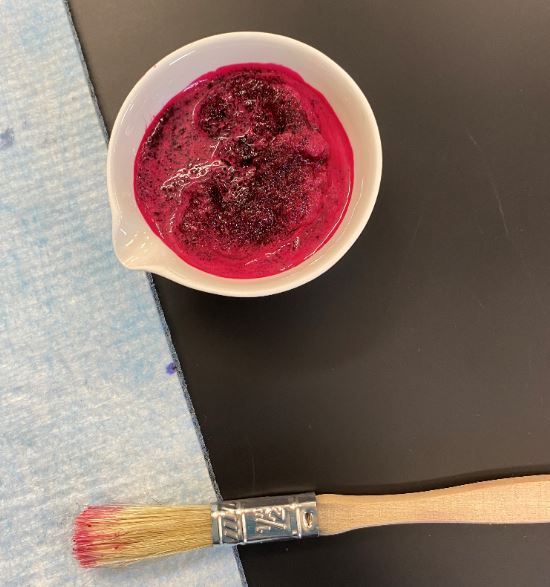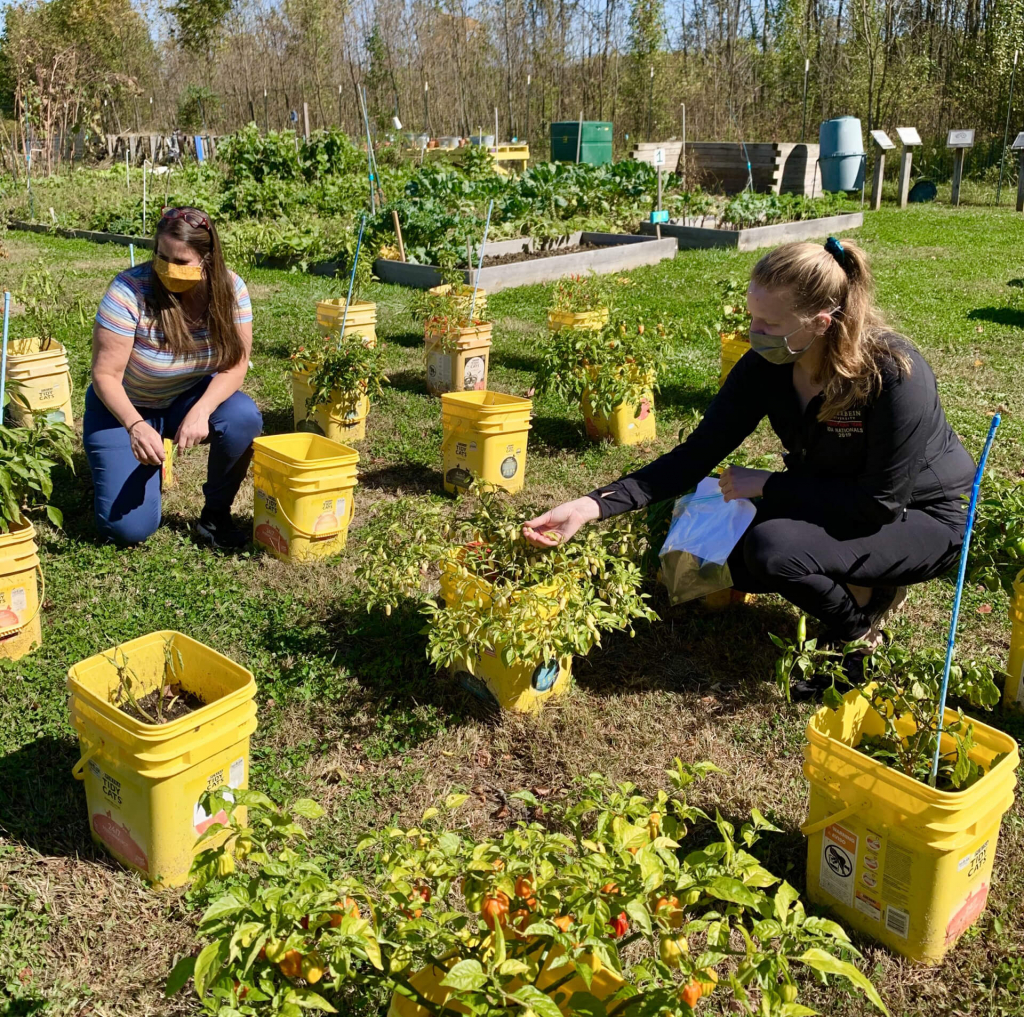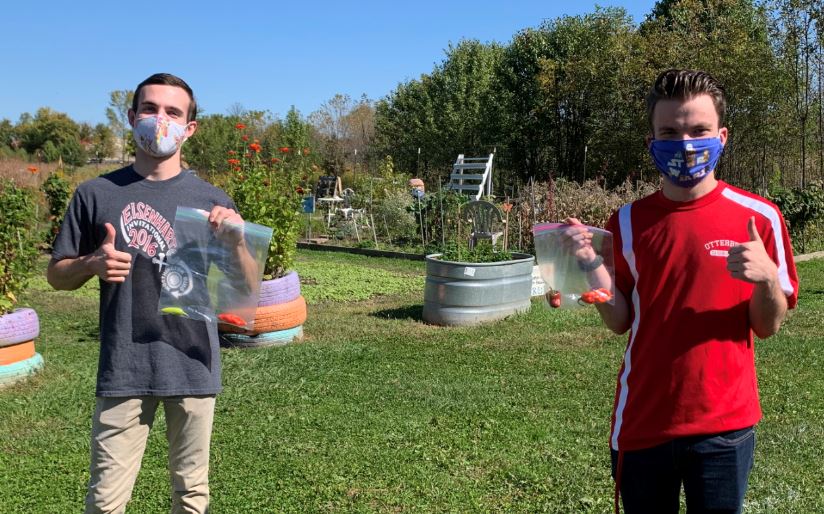Otterbein Community Garden Transforms Peppers and Pigments into Chemistry Lessons
Posted Apr 12, 2021
Otterbein’s Community Garden is celebrating its 10th year of providing hunger relief to local food pantries, including Otterbein’s on-campus Promise House. In addition to its work fighting food insecurity, the garden serves as an innovative study and research site for Otterbein students, faculty, and staff.
Two classes offered by Professor of Chemistry Joan Esson spent time learning about and using products from the garden during Fall 2020.
“There’s something special about being out in the Otterbein Community Garden that just catalyzes a students’ thinking,” said Esson. “It provides a whole different perspective. Plus, with the pandemic, this is one of the few times during fall semester they could all be in one place and safely interact with each other.”
Esson is very conscious of how the stereotype of chemists in their white lab coats never leaving their laboratories continues to persist today. Breaking out of that thought process opens students to new possibilities. It’s a fun and relaxed environment where students can really enjoy their education while growing academically and professionally as well.

Students from INST 2408: Chemistry in Art, were introduced to the garden on a beautiful sunny fall day by Melissa Gilbert, director of the Center for Community Engagement (CCE). Students harvested flowers and produce, such as berries and beets, that could be used as a source of natural dyes to create anthotypes.
Anthotypes are a type of early 19th century photography using the photooxidative fading of the dyes to create an image. It was important for Esson to give her students the hands-on experience seeing how dyes and other substances are produced and used from beginning to end.
Sophomore Kelsie Kinsey was one Chemistry in Art student who had passed by the Otterbein Community Garden multiple times and saw the corn, grapes, and other plants growing, but had never set foot inside the planting rows. An avid gardener and nature lover, she was excited to take her education outside for hands-on learning, discovering new connections that a liberal arts education provides.
“Before this class, I had never thought about how art and science could work alongside and complement each other,” said Kinsey. “I gained so much knowledge on how to think more creatively and how to adapt problem solving skills out in the field.”

Chemistry majors and minors in CHEM 3110: Analytical Chemistry Laboratory also spent time at the Community Garden gathering over a dozen species of peppers. Some of these peppers had been planted and grown by Professor of Chemistry John Tansey. The peppers have quite a range in expected heat values and some species were unknown.
Otterbein students took the samples back to the laboratory where they were prepared and analyzed by high-performance liquid chromatography for their capsaicin levels, which produce the heat of a pepper.
The results from the harvest were turned into salsa and hot sauce shared at one of Cardy’s Pop-Up Events, run by the CCE and co-sponsored by the Otterbein Promise House resource center. Students, faculty and staff could take home a pot of peppers along with a better understanding of heat ratings for each.
“Tying food insecurity concepts and solutions into our coursework is important work. The garden being a large supplier of fresh produce to the Promise House gave students a first-hand look at farm-to-table practices that can be done right in their communities,” Esson said.
Through these experiences, students learned about chemistry, and many were introduced to the Community Garden for the first time. During a strange term that produced additional anxiety for many, the students appreciated a different space that provided relaxation and reflection.
“I loved being out in nature at the garden. Our whole class gained a new viewpoint of how to apply the concepts we learned in class. It’s a fascinating and extremely enjoyable experience Otterbein has created,” Kinsey said.
Esson will continue working with the Community Garden in future classes and is starting a dye garden that can be used to help her research.
“I’m really excited for the possibilities this new garden will provide to students as well as our research. One area I’m concentrating on right now is natural dyes and how different natural materials can provide subtle variations in pigments so that we can begin growing our own materials rather than buying the dyes. I currently have a research student looking at what plants produce what shades of indigo and how we can best grow them in our plot,” she said.

Esson encourages all Otterbein campus community members to go see the Community Garden as it offers a retreat from busy schedules and stressful times.
“For faculty, it’s an amazing resource for our classes and students to utilize. For students, it’s a place to engage in a new form of learning and to clear your head. The University’s commitment to educating the whole person, infused with integrating direct experience into all learning all comes together out in the Garden,” she said.
If you are interested in supporting the Community Garden and its goal of providing food for those in need, please visit https://www.otterbein.edu/give/, select Other and enter Community Garden.
Start your application to become an Otterbein Cardinal today! Visit Otterbein.edu/Apply.